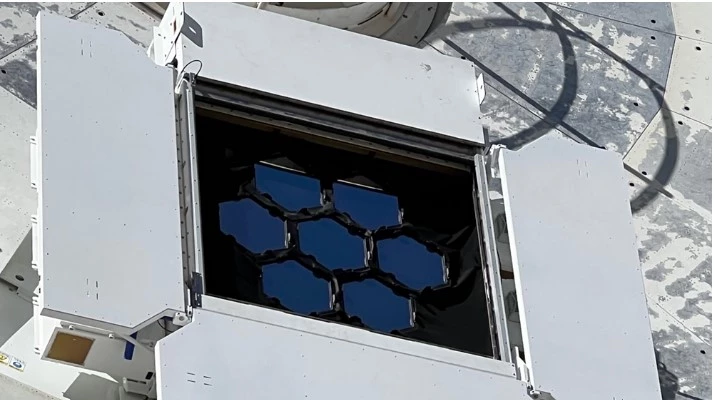In a move to make high-speed communications with deep space missions a practical reality, NASA is testing a giant hybrid dish antenna that is capable of handling both radio and laser signals across hundreds of millions of miles of space.
One of the highlights of NASA's Psyche mission to the asteroid of the same name is its Deep Space Optical Communications (DSOC) unit, which is a laser transceiver capable of sending and receiving laser signals, enabling communications many times faster than conventional radio systems.
So far, it's had some remarkable successes since the robotic probe was launched on October 13, 2023. In November, the DSOC successfully transmitted data from a distance of 10 million miles (16 million km), or 40 times the distance from the Earth to the Moon.
The only problem is that the link between Earth and Psyche was by way of a jury rigged test setup. The DSOC was aimed at the Hale Telescope at Caltech’s Palomar Observatory in San Diego County, California with the aid of a laser beacon transmitted from the Optical Communications Telescope Laboratory at JPL’s Table Mountain Facility near Wrightwood, California.

That's a very simple way of describing a very complex system that required all sorts of automated aids plus the ability to predict the position of and lock onto a spacecraft that was so far away that it takes 20 seconds for a signal to cover the distance. It also meant tying up two very expensive astronomical observatories where researchers have to schedule time years in advance.
What NASA would prefer is something a bit more dedicated and permanent, so in a separate project the space agency is working on a hybrid antenna that can be incorporated into the three stations of the Deep Space Network situated at Goldstone, California; Madrid, Spain; and Canberra, Australia.

The test version is a 34-m (112-ft) radio-frequency-optical-hybrid antenna called Deep Space Station 13, at the Goldstone Deep Space Communications Complex, near Barstow, California. For the test, the giant dish has been modified with seven ultra-precise segmented mirrors equivalent to a 3.3-ft (1-m) aperture telescope. This catches the laser beam from space and focuses it on a receiver in the form of a high-exposure camera attached to the antenna’s subreflector suspended above the center of the dish. The signal is then sent by optical fiber to a cryogenically-cooled semiconducting nanowire single photon detector to boost it to readable levels.
According to NASA, the antenna was able to maintain contact with Psyche and late last year it was able to establish a downlink of 15.63 Mbit/s or about 40 times the rate of radio across a distance of 20 million miles (32 million km). It was also able to simultaneously receive the probe's radio signal.
The hope is that the hybrid antenna will be able to maintain contact with Psyche at a distance equivalent to that of Mars at its farthest point from Earth, or 232 million miles (374 million km). The next step will be to scale up the optical mirror array to the equivalent of a 26-ft (8-m) telescope and to later retrofit some of the 14 dishes that make up the DSN to collect both high-speed laser signals and lower speed radio traffic.
"For decades, we have been adding new radio frequencies to the DSN’s giant antennas located around the globe, so the most feasible next step is to include optical frequencies," said Barzia Tehrani, communications ground systems deputy manager and delivery manager for the hybrid antenna at the Jet Propulsion Laboratory (JPL). "We can have one asset doing two things at the same time; converting our communication roads into highways and saving time, money, and resources."
Source: NASA





